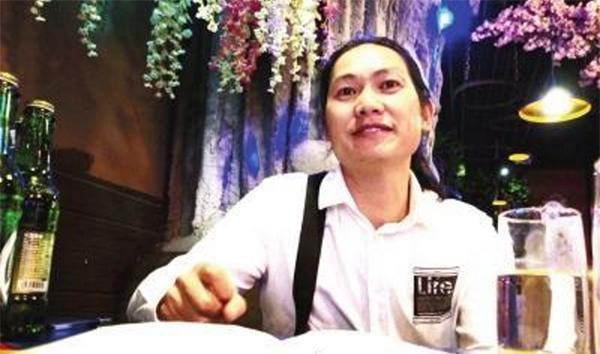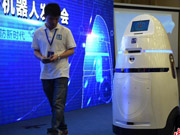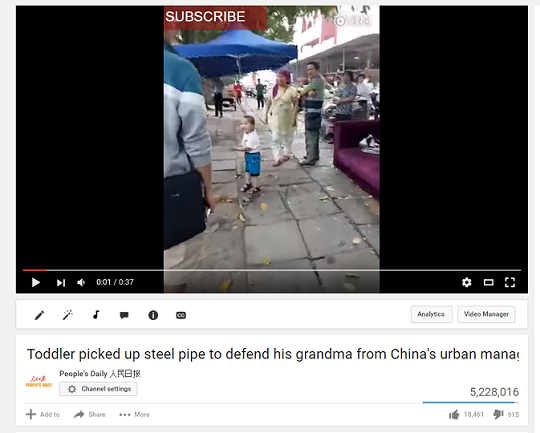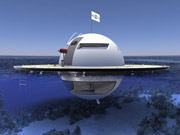


Wu Ping, deputy director of China's manned space engineering office, addresses a press conference at the Jiuquan Satellite Launch Center in northwest China, Oct. 16, 2016. The Shenzhou-11 manned spacecraft will be launched at 7:30 a.m. Oct. 17, 2016 Beijing Time (2330 GMT Oct. 16). The spaceship will take two male astronauts Jing Haipeng and Chen Dong into space. The spacecraft will dock with orbiting space lab Tiangong-2 within two days and the astronauts will stay in the space lab for 30 days before returning to Earth. The 50-year-old Jing will be commander of the mission. It will be the first spaceflight of 38-year-old Chen and Jing Haipeng's third. (Xinhua/Li Gang)
The Shenzhou-11 manned spacecraft will be launched at 7:30 a.m. Monday Beijing Time, China's manned space program spokesperson said Sunday.
The spaceship will take two male astronauts Jing Haipeng and Chen Dong into space, said Wu Ping, deputy director of China's manned space engineering office, at a press conference at the Jiuquan Satellite Launch Center.
The mission will be carried out with a Long March-2F carrier rocket, Wu said.
The spacecraft will dock with orbiting space lab Tiangong-2 within two days, and the astronauts will stay in the space lab for 30 days, she said.
After that the Shenzhou-11 spaceship will separate with Tiangong-2 and return to Earth within one day, Wu said.
The mission aims to transport personnel and materials between Earth and Tiangong-2, and examine rendezvous, docking and return technologies.
During the mission, the spacecraft will form a complex with Tiangong-2. The complex's capabilities of supporting astronauts' life, work and health, and astronauts' abilities for carrying out flight missions will be tested, Wu said.
Other objectives include conducting aerospace medical experiments, space science experiments and in-orbit maintenance with human participation, along with activities to popularize scientific knowledge, she added.
Several technical alterations have been made to Shenzhou-11, though its main functions and technical parameters remain basically the same with Shenzhou-10, Wu said.
To meet the needs of this mission, the orbit control strategy and flight procedures have been adjusted to adapt Shenzhou-11 to the change of the rendezvous, docking and return orbit from 343 kilometers to 393 kilometers from Earth.
The layout of cargo loading has been adjusted to enhance transportation capabilities for the mission.
To further improve the spacecraft's reliability and astronauts' safety, wide-beam relay telecommunications devices have been equipped, which will significantly expand the scope of telemetry, tracking and control, as well as improve the space-ground communication support capabilities when the posture of the spacecraft is changing rapidly.
To verify future space technologies and meet the demand for prolonging the service life of rendezvous, telemetry and tracking devices in future space stations, such devices in Shenzhou-11 have been upgraded, according to Wu.
Certain technical alterations have also been made to the carrier rocket, she said.
 Restaurant loses 100,000 RMB in 7 days due to laissez-faire…
Restaurant loses 100,000 RMB in 7 days due to laissez-faire…
Voice of China: Why a Third Phase of the U.S. Rebalance to …
Beijing warns Taipei after Tsai discussed 'independence' in…
China to launch world's first X-ray pulsar navigation satel…
 China refutes criticism of peacekeeping troops in South Sud…
China refutes criticism of peacekeeping troops in South Sud…

 Who Will Fit The Chinese Roles In Game Of Thrones?
Who Will Fit The Chinese Roles In Game Of Thrones? China's Hubei Shennongjia added to World Heritage List
China's Hubei Shennongjia added to World Heritage List Cute Dog At Fruit Stand Becomes Latest Internet Sensation
Cute Dog At Fruit Stand Becomes Latest Internet Sensation Top 10 livable Chinese cities
Top 10 livable Chinese cities The last primitive tribe in China
The last primitive tribe in China China's first intelligent security robot debuts in Chongqing
China's first intelligent security robot debuts in Chongqing A Total of 3,552 Subscribers Vanish In Two Days; YouTube Closes All Doors to Users’ Inquiries
A Total of 3,552 Subscribers Vanish In Two Days; YouTube Closes All Doors to Users’ Inquiries Out of this world! Futuristic UFO-shaped yacht has its own garden and a stunning underwater viewing deck
Out of this world! Futuristic UFO-shaped yacht has its own garden and a stunning underwater viewing deck An old tea house in Chengdu
An old tea house in Chengdu Furious Customer Crushes All the Buns from Vendor Just Because He Was Given the Wrong Flavor
Furious Customer Crushes All the Buns from Vendor Just Because He Was Given the Wrong Flavor